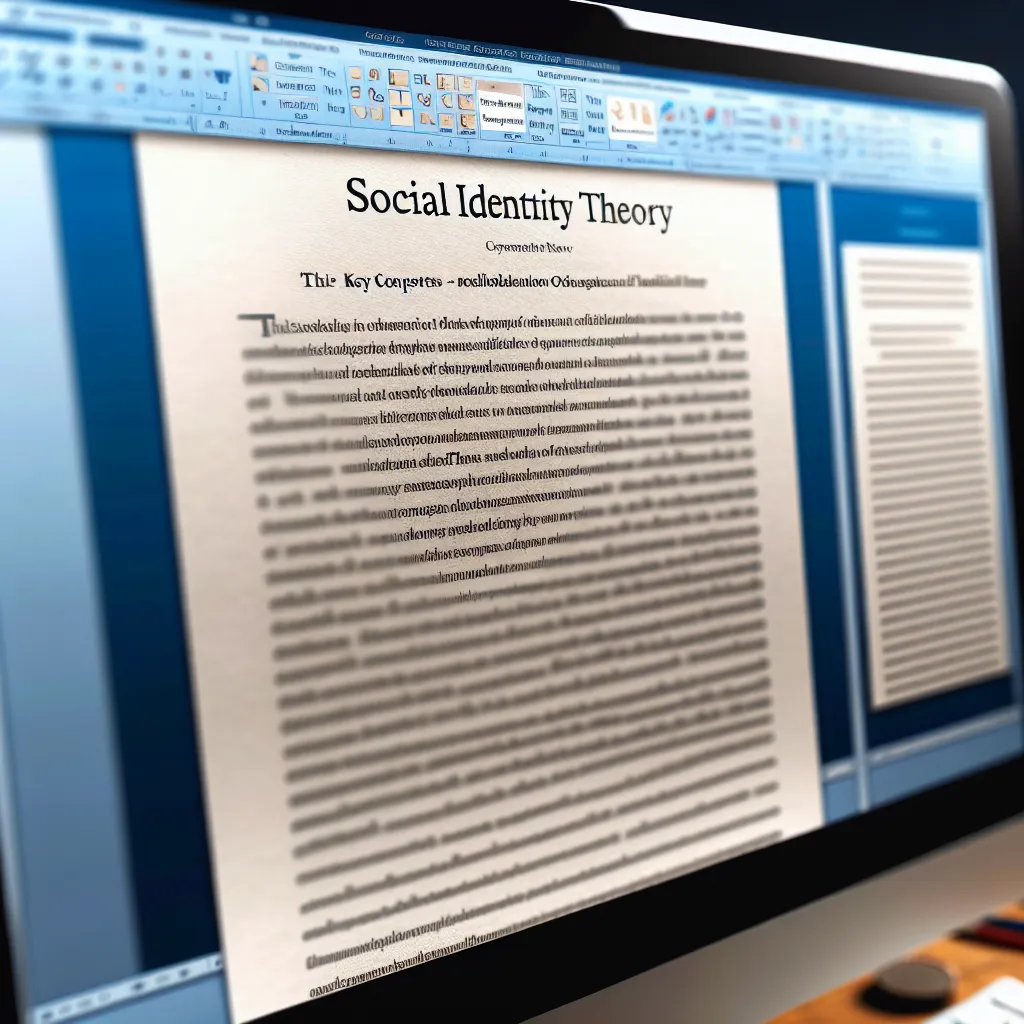Ask AI on The Internet
Question: Using the Social Identity Theory (SIT), discuss how and why people engage in intergroup discrimination.* *Instructions:* This assignment should: a. be typed in Times New Roman, font 12, aligned to the left. b. have atleast 5 references C. 2 typed pages on Microsoft word
Social Identity Theory (SIT), developed by Henri Tajfel and John Turner in the 1970s, provides a comprehensive framework for understanding intergroup behavior, including why individuals engage in intergroup discrimination. This theory posits that a person's self-concept is derived not only from personal identity but also from social identity, which is the individual's sense of who they are based on their group membership(s). This dual-component view of identity helps explain the motivations behind intergroup discrimination. ### Understanding Social Identity Theory #### Key Concepts 1. **Categorization**: SIT suggests that people categorize themselves and others into various social groups (e.g., nationality, ethnicity, profession) in order to simplify and make sense of the complex social environment. This categorization tends to accentuate the differences between groups (intergroup) and the similarities within the same group (intragroup). 2. **Identification**: Once individuals categorize themselves into groups, they then adopt the identity of the group they have categorized themselves as belonging to. This identification with a group can significantly impact their self-esteem and worldview. 3. **Comparison**: After people identify with particular groups, they engage in social comparison, evaluating their own group (the in-group) against other groups (the out-groups). Favorable comparisons elevate self-esteem and reinforce the positive distinctiveness of the in-group. ### Why People Engage in Intergroup Discrimination #### Self-Esteem and Positive Distinctiveness One of the primary reasons people engage in intergroup discrimination is to boost their self-esteem. According to SIT, individuals strive for a positive self-concept, and a significant portion of this self-concept comes from group memberships. When an in-group is compared favorably against an out-group, it leads to enhanced self-esteem for its members. Discrimination against out-groups thus becomes a mechanism through which individuals can protect or enhance their self-worth by promoting the superior status of their in-group. #### In-group Favoritism and Out-group Hostility Another reason for intergroup discrimination is the inherent favoritism towards the in-group, often accompanied by hostility towards the out-group. This stems from the desire to see one's own group as better, leading to actions that uplift the in-group and demean the out-group. Such behavior is also motivated by competition over resources, power, and status, wherein diminishing the out-group's access to these can inadvertently benefit the in-group. #### Social and Cultural Influences The social context and cultural norms can further exacerbate intergroup discrimination. In societies where group distinctions are emphasized and intergroup competition is prevalent, discriminatory behaviors can be more pronounced. Individuals may conform to the expectations and behaviors of their in-group, which often entails discriminatory practices against out-groups to maintain group cohesion and normative compliance. ### Examples and Implications #### Empirical Studies Several empirical studies support SIT's propositions. For instance, Tajfel's minimal group studies demonstrated that people would show favoritism toward arbitrarily assigned in-group members and discriminate against out-group members even in the absence of any real conflict of interest. These findings highlight the ease with which in-group bias and subsequent discrimination can be triggered. #### Real-world Implications In the real world, SIT explains a range of intergroup conflicts, from everyday bias and prejudices to systemic discrimination and large-scale intergroup violence. Understanding the SIT framework allows psychologists, sociologists, and policymakers to devise interventions aimed at reducing intergroup discrimination by promoting more inclusive social identities and reducing the salience of group boundaries. ### Conclusion Social Identity Theory offers vital insights into the mechanisms driving intergroup discrimination. By understanding the processes of categorization, identification, and comparison, we can better comprehend why individuals engage in discriminatory practices. These behaviors are often rooted in the need for self-esteem, group favoritism, and socio-cultural influences. Addressing these underlying motivations is essential for creating more cohesive and inclusive societies. ### References 1. Tajfel, H., & Turner, J. C. (1979). An Integrative Theory of Intergroup Conflict. In W. G. Austin & S. Worchel (Eds.), *The Social Psychology of Intergroup Relations.* Monterey, CA: Brooks/Cole. 2. Brown, R. (2000). *Group Processes: Dynamics within and between Groups.* Oxford: Blackwell. 3. Hogg, M. A., & Abrams, D. (1988). *Social Identifications: A Social Psychology of Intergroup Relations and Group Processes.* London: Routledge. 4. Brewer, M. B. (1999). The Psychology of Prejudice: Ingroup Love and Outgroup Hate? *Journal of Social Issues, 55*(3), 429-444. 5. Tajfel, H. (1982). *Social Identity and Intergroup Relations.* Cambridge: Cambridge University Press. Note: Make sure to tailor the formatting to comply with your assignment requirements on Microsoft Word, ensuring Times New Roman, font size 12, and left alignment.
Think your answer is better than the AI's? Post it below.
Other Most Relevant Posts:
 ### Symbolic Interactionism in Families
### Parsons' AGIL Model Decoded
### Conflict Theory in Society
### Symbolic Interactionism in Families
### Parsons' AGIL Model Decoded
### Conflict Theory in Society
 Embracing Diversity: A Holistic Approach to Inclusion in the Workplace
Introduction:
Diversity and inclusion encompass a wide array of dimensions that contribute to the richness of human experiences.
Embracing Diversity: A Holistic Approach to Inclusion in the Workplace
Introduction:
Diversity and inclusion encompass a wide array of dimensions that contribute to the richness of human experiences.
Question Tags
If you want your question answered by an AI, click here.





Post your own comment: